Zfp281 is essential for mouse epiblast maturation through transcriptional and epigenetic control of Nodal signaling
- PMID: 29168693
- PMCID: PMC5708896
- DOI: 10.7554/eLife.33333
Zfp281 is essential for mouse epiblast maturation through transcriptional and epigenetic control of Nodal signaling
Abstract
Pluripotency is defined by a cell's potential to differentiate into any somatic cell type. How pluripotency is transited during embryo implantation, followed by cell lineage specification and establishment of the basic body plan, is poorly understood. Here we report the transcription factor Zfp281 functions in the exit from naive pluripotency occurring coincident with pre-to-post-implantation mouse embryonic development. By characterizing Zfp281 mutant phenotypes and identifying Zfp281 gene targets and protein partners in developing embryos and cultured pluripotent stem cells, we establish critical roles for Zfp281 in activating components of the Nodal signaling pathway and lineage-specific genes. Mechanistically, Zfp281 cooperates with histone acetylation and methylation complexes at target gene enhancers and promoters to exert transcriptional activation and repression, as well as epigenetic control of epiblast maturation leading up to anterior-posterior axis specification. Our study provides a comprehensive molecular model for understanding pluripotent state progressions in vivo during mammalian embryonic development.
Keywords: A-P patterning; developmental biology; epiblast maturation; lineage commitment; mouse; mouse embryo; nodal signaling; stem cells.
Conflict of interest statement
No competing interests declared.
Figures
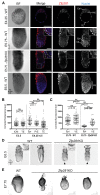



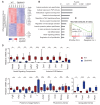


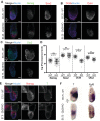


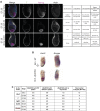
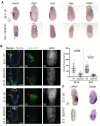

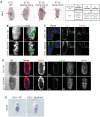
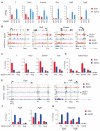


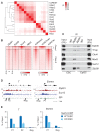

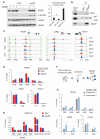
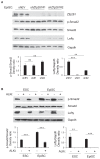
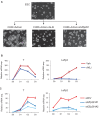




Similar articles
-
ZFP281 controls transcriptional and epigenetic changes promoting mouse pluripotent state transitions via DNMT3 and TET1.Dev Cell. 2024 Feb 26;59(4):465-481.e6. doi: 10.1016/j.devcel.2023.12.018. Epub 2024 Jan 17. Dev Cell. 2024. PMID: 38237590 Free PMC article.
-
Pig epiblast stem cells depend on activin/nodal signaling for pluripotency and self-renewal.Stem Cells Dev. 2010 Oct;19(10):1627-36. doi: 10.1089/scd.2010.0012. Stem Cells Dev. 2010. PMID: 20210627 Free PMC article.
-
A novel nodal enhancer dependent on pluripotency factors and smad2/3 signaling conditions a regulatory switch during epiblast maturation.PLoS Biol. 2014 Jun 24;12(6):e1001890. doi: 10.1371/journal.pbio.1001890. eCollection 2014 Jun. PLoS Biol. 2014. PMID: 24960041 Free PMC article.
-
Epiblast stem cells contribute new insight into pluripotency and gastrulation.Dev Growth Differ. 2010 Apr;52(3):293-301. doi: 10.1111/j.1440-169X.2010.01171.x. Epub 2010 Mar 7. Dev Growth Differ. 2010. PMID: 20298258 Review.
-
Mapping the route from naive pluripotency to lineage specification.Philos Trans R Soc Lond B Biol Sci. 2014 Dec 5;369(1657):20130540. doi: 10.1098/rstb.2013.0540. Philos Trans R Soc Lond B Biol Sci. 2014. PMID: 25349449 Free PMC article. Review.
Cited by
-
Zfp296 knockout enhances chromatin accessibility and induces a unique state of pluripotency in embryonic stem cells.Commun Biol. 2023 Jul 24;6(1):771. doi: 10.1038/s42003-023-05148-8. Commun Biol. 2023. PMID: 37488353 Free PMC article.
-
ZFP281 controls transcriptional and epigenetic changes promoting mouse pluripotent state transitions via DNMT3 and TET1.Dev Cell. 2024 Feb 26;59(4):465-481.e6. doi: 10.1016/j.devcel.2023.12.018. Epub 2024 Jan 17. Dev Cell. 2024. PMID: 38237590 Free PMC article.
-
Transcription factor antagonism regulates heterogeneity in embryonic stem cell states.Mol Cell. 2022 Dec 1;82(23):4410-4427.e12. doi: 10.1016/j.molcel.2022.10.022. Epub 2022 Nov 9. Mol Cell. 2022. PMID: 36356583 Free PMC article.
-
ZFP281 recruits polycomb repressive complex 2 to restrict extraembryonic endoderm potential in safeguarding embryonic stem cell pluripotency.Protein Cell. 2021 Mar;12(3):213-219. doi: 10.1007/s13238-020-00775-x. Protein Cell. 2021. PMID: 32812113 Free PMC article. No abstract available.
-
Specifying the Anterior Primitive Streak by Modulating YAP1 Levels in Human Pluripotent Stem Cells.Stem Cell Reports. 2018 Dec 11;11(6):1357-1364. doi: 10.1016/j.stemcr.2018.10.013. Epub 2018 Nov 15. Stem Cell Reports. 2018. PMID: 30449705 Free PMC article.
References
-
- Ang SL, Jin O, Rhinn M, Daigle N, Stevenson L, Rossant J. A targeted mouse Otx2 mutation leads to severe defects in gastrulation and formation of axial mesoderm and to deletion of rostral brain. Development. 1996;122:243–252. - PubMed
Publication types
MeSH terms
Substances
Grants and funding
LinkOut - more resources
Full Text Sources
Other Literature Sources
Molecular Biology Databases

